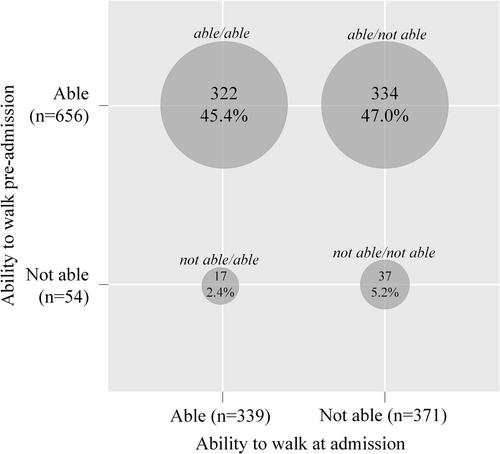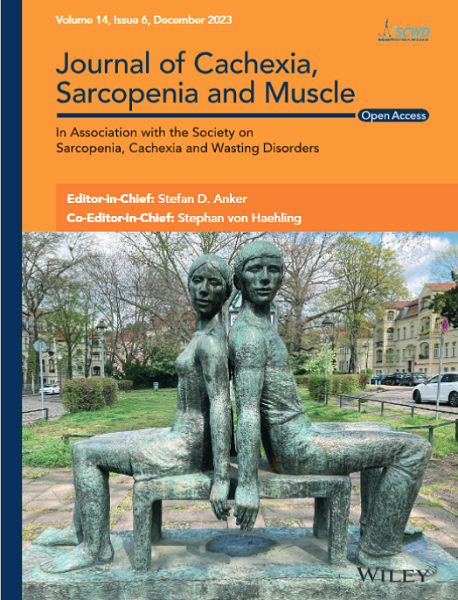The impact of mobility limitations on geriatric rehabilitation outcomes: Positive effects of resistance exercise training (RESORT)
Abstract
Background
Regaining walking ability is a key target in geriatric rehabilitation. This study evaluated the prevalence of walking ability at (pre-)admission and related clinical characteristics in a cohort of geriatric rehabilitation inpatients; in inpatients without walking ability, feasibility and effectiveness of progressive resistance exercise training (PRT) were assessed.
Methods
Inpatients within RESORT, an observational, longitudinal cohort of geriatric rehabilitation inpatients, were stratified in those with and without ability to walk independently (defined by Functional Ambulation Classification (FAC) score ≤ 2) at admission; further subdivision was performed by pre-admission walking ability. Clinical characteristics at admission, length of stay, and changes in physical and functional performance throughout admission were compared depending on (pre-)admission walking ability. Feasibility (relative number of PRT sessions given and dropout rate) and effectiveness [change in Short Physical Performance Battery, FAC, independence in (instrumental) activities of daily living (ADL/IADL)] of PRT (n = 11) in a subset of inpatients without ability to walk independently at admission (able to walk pre-admission) were investigated compared with usual care (n = 11) (LIFT-UP study).
Results
Out of 710 inpatients (median age 83.5 years; 58.0% female), 52.2% were not able to walk independently at admission, and 7.6% were not able to walk pre-admission. Inpatients who were not able to walk independently at admission, had a longer length of stay, higher prevalence of cognitive impairment and frailty and malnutrition risk scores, and a lower improvement in independence in (I)ADL compared with inpatients who were able to walk at both admission and pre-admission. In LIFT-UP, the relative median number of PRT sessions given compared with the protocol (twice per weekday) was 11 out of 44. There were no dropouts. PRT improved FAC (P = 0.028) and ADL (P = 0.034) compared with usual care.
Conclusions
High prevalence of inpatients who are not able to walk independently and its negative impact on independence in (I)ADL during geriatric rehabilitation highlights the importance of tailored interventions such as PRT, which resulted in improvement in FAC and ADL.


 求助内容:
求助内容: 应助结果提醒方式:
应助结果提醒方式:


